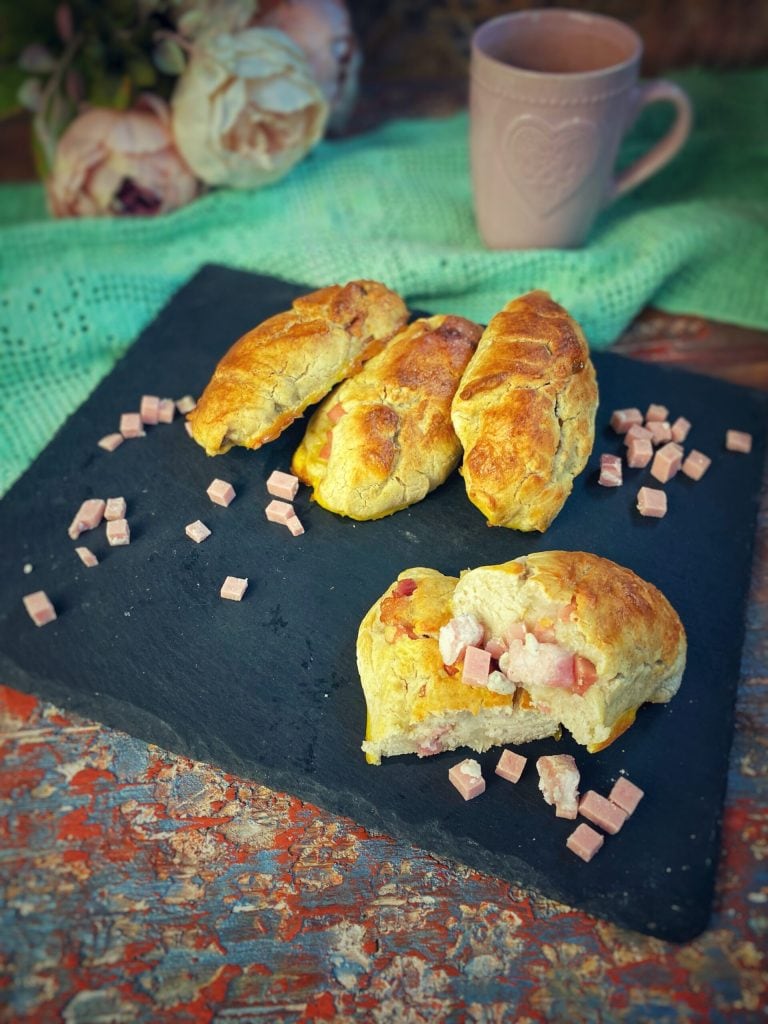Venezuelan cachitos are similar to croissants, often filled with ham and cheese and/or bacon.
The ingredients and fillings vary depending on the state and bakery they come from, but the most common ingredients are: wheat flour, butter, eggs, milk, water, salt, yeast and a pinch of sugar.
The origin of cachitos is uncertain.
Some associate them with the arrival of Portuguese and Italian bakers in the early 20th century, while others believe they were born in the kitchen of an Italian baker named Pietroluchi Pancaldi in Lusiteña, Caracas in 1940.
And others believe they are a derivative of the Venezuelan Christmas dish, Pan de Jamon.
The cheese used is “queso de mano“, a fresh Venezuelan cheese, also an ingredient in cachapa.
They are usually consumed during breakfast, accompanied by natural juices, coffee, or Malta, a slightly carbonated and non-alcoholic malt beverage made with barley, hops, and water.

- Difficulty: Medium
- Cost: Economical
- Rest time: 30 Minutes
- Preparation time: 10 Minutes
- Portions: 12Pieces
- Cooking methods: Oven
- Cuisine: Venezuelan
- Seasonality: All seasons
Ingredients
- 4 cups flour
- 2 tablespoons sugar
- 2 eggs
- 1/4 cup milk (room temperature)
- 2 1/4 teaspoons active dry yeast (or 25 g fresh yeast or 300 ml fresh sourdough)
- 3/4 cup water
- 1/4 cup butter
- 7.1 oz ham (diced)
- 5.3 oz bacon (diced)
- to taste salt
Steps
Mix the sugar with the salt, add 1 egg, milk, water, melted butter, and finally the yeast.
Mix, add the flour, knead and create a dough.
Let rest for 30 minutes.
Cut into 12 triangles, with the base facing you. Add the filling of diced ham and bacon (and/or cheese). Fold the sides and roll.
Brush with beaten egg and bake in the oven at 350°F for 15 minutes.

FAQ (Frequently Asked Questions)
Who doesn’t remember Topazio the famous Venezuelan telenovela from the ’80s?
What is Queso de mano?
It is a type of fresh cheese originating and produced in Venezuela.
It has a flat and round shape (flat), stringy texture, and a soft and elastic consistency, obtained from the enzymatic coagulation process of raw cow’s milk, whole or skimmed.
The characteristic stringy texture of this type of cheese is obtained through the fermentation process of the sweet curd until reaching the “ready curd,” a characteristic property of stringy cheeses, which consists of forming strings when stretched when the curd is cooked in water at 194°F.
The resulting product has a soft and elastic consistency, with layers or sheets easily separable, and its preservation method is by immersion in serum at room temperature.
Its consistency resembles mozzarella.

